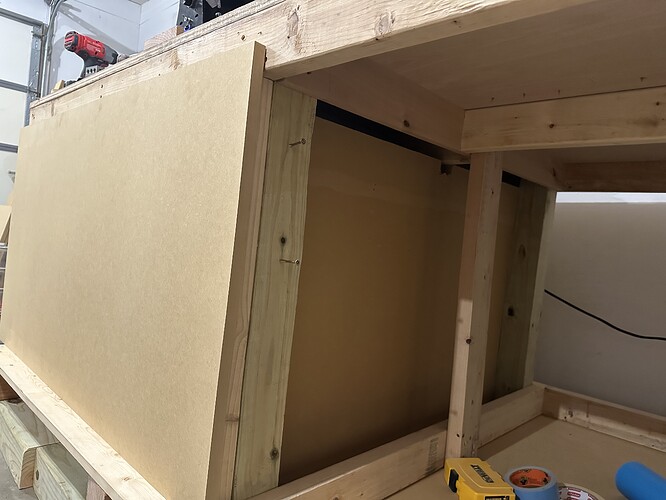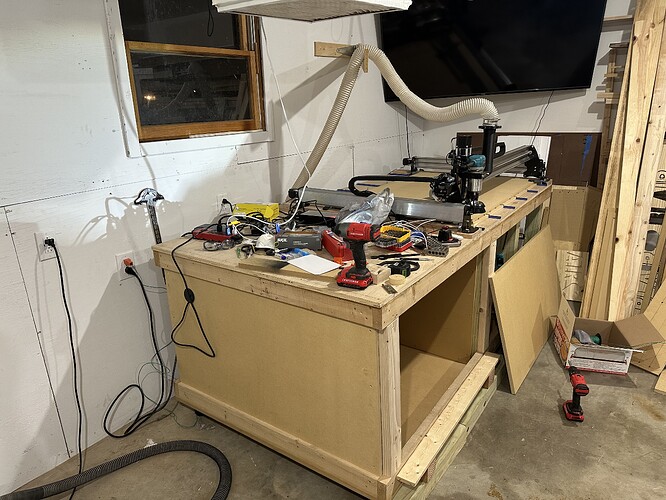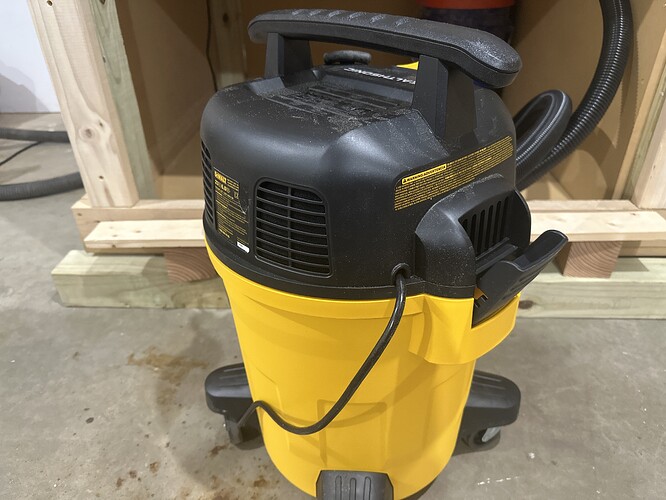Michael, the man with all the answers. I’m always glad when I see you’ve commented on one of my posts because I know I’m going to get some good material.
I love your idea, and it’s funny because I just picked up a Dewalt StealthSonic Vacuum to replace my super loud Ridgid ShopVac, aiming for something similar to what you suggested. The StealthSonic is impressively quiet, and after checking out some videos, I was ready to dive into your plan.
However, there’s a catch: the StealthSonic doesn’t have a single exhaust port like a traditional shop vacuum. Instead, it vents air from multiple spots on the top lid, making it impossible to capture and direct that warm exhaust air out. Even crazier, one of the 4 vents located around the top of the vacuum is actually bringing air in, so in a confined space with a low ceiling it’s immediately pulling back in the warm air expelled by the other vents. That being said, I’m thinking of setting up a system that channels the hot air up and out at the top of the enclosure while drawing in cooler air from the bottom.
My plan involves a quiet yet powerful exhaust fan that operates at 30 dB and moves 51 CFM, positioned at the top rear wall of the enclosure. I’d then add some 12”x6” air vents near the front on two sides at the bottom to pull fresh air in. It’s definitely an unconventional approach, but it’s the best idea I’ve got.
I’ve toyed with the idea of going back to the loud Ridgid Vac and doing what a lot of folks recommend: using an exhaust fan to push fresh air into the enclosure and vent the exhaust out an opening in the back. But honestly, I’m leaning towards sticking with the StealthSonic because even minor insulation makes it incredibly quiet! The only thing I really have to figure out is how to keep it from getting too hot. My best idea is to turn the enclosure into a vacuum that immediately sucks out the warm exhaust air and pulls in fresh air from outside.
I’d love to hear your thoughts or any other ideas you might have!
*Quick Edit - It is in fact pulling air in on one side and pushing air out the other, BUT I attached an image of my Ridgid Vac and it does the exact same thing. The Air Slits exist on both sides of the lid, with one pulling in air and one pushing out. One of those obvious things that guess just never occurred to me? I was under the impression that air strictly came from one end and got pushed out the other. I guess that’s part of the engineering/design with ShopVacs? So even if I were to put my Ridgid inside of my enclosure I would need to extract the air flowing out from the side of the lid… It’s odd that I’ve never seen that aspect brought up in any of the videos I’ve watched in regards to enclosure exhaust. They basically all say to hook a hose up to the exhaust end and you’re good.
**Edit to the Edit (Question Solved). I’m sure everyone knows this except for me, but that side to side airway run is designed specifically to cool the motor. I had no idea that there were two totally separate air-draws; one for suction and one to specifically cool the motor, but that is REALLY good to know.






